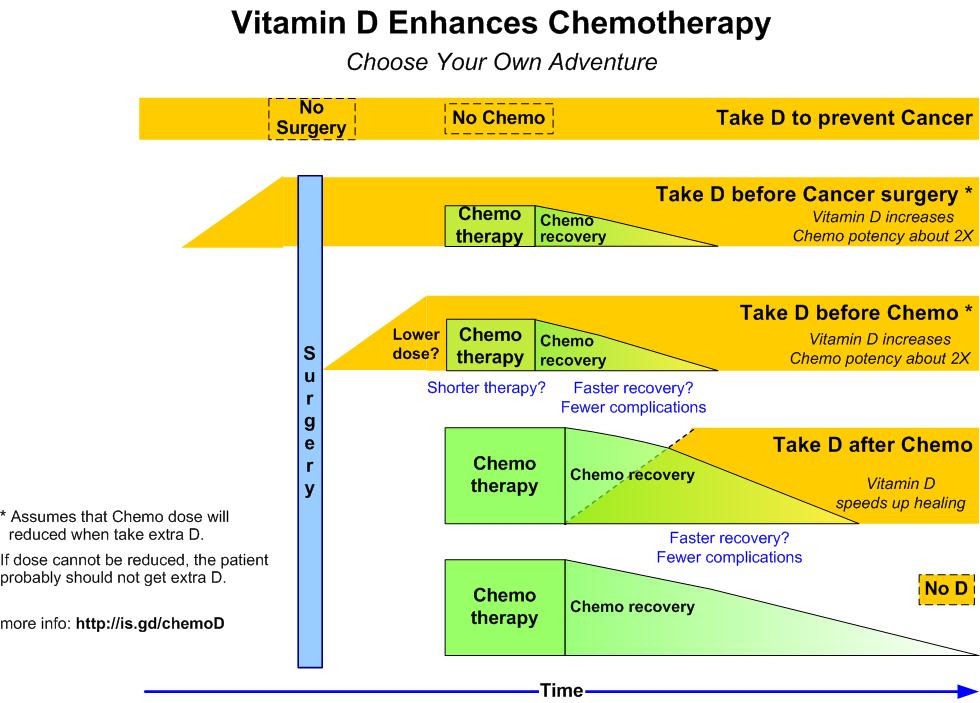4X less of one chemo needed after vitamin D receptor activation
Vitamin D Receptor Activation and Photodynamic Priming Enables Durable Low-dose Chemotherapy
Molecular Cancer Theraputics DOI: 10.1158/1535-7163.MCT-19-0791
Sriram Anbil, Michael Pigula, Huang-Chiao Huang, Srivalleesha Mallidi, Mans Broekgaarden, Yan Baglo, Pushpamali De Silva, Diane M. Simeone, Mari Mino-Kenudson, Edward V. Maytin, Imran Rizvi and Tayyaba Hasan
 click on chart for details
---
1. Items in both categories Cancer - After diagnosis and Vitamin D Receptor:
{category}
---
1. Vitamin D Receptor and Cancers
{include}
click on chart for details
---
1. Items in both categories Cancer - After diagnosis and Vitamin D Receptor:
{category}
---
1. Vitamin D Receptor and Cancers
{include}
📄 Download the PDF from Sci-Hub iva VitaminDWiki

Patients with cancer often confront the decision of whether to continue high-dose chemotherapy at the expense of cumulative toxicities. Reducing the dose of chemotherapy regimens while preserving efficacy is sorely needed to preserve the performance status of these vulnerable patients, yet has not been prioritized. Here, we introduce a dual pronged approach to modulate the microenvironment of desmoplastic pancreatic tumors and enable significant dose deescalation of the FDA-approved chemotherapeutic nanoliposomal irinotecan (nal-IRI) without compromising tumor control. We demonstrate that light-based photodynamic priming (PDP) coupled with vitamin D3 receptor (VDR) activation within fibroblasts increases intratumoral nal-IRI accumulation and suppresses protumorigenic CXCL12/CXCR7 crosstalk. Combined photodynamic and biochemical modulation of the tumor microenvironment enables a 75% dose reduction of nal-IRI while maintaining treatment efficacy, resulting in improved tolerability. Modifying the disease landscape to increase the susceptibility of cancer, via preferentially modulating fibroblasts, represents a promising and relatively underexplored strategy to enable dose deescalation. The approach presented here, using a combination of three clinically available therapies with nonoverlapping toxicities, can be rapidly translated with minimal modification to treatment workflow, and challenges the notion that significant improvements in chemotherapy efficacy can only be achieved at the expense of increased toxicity.
